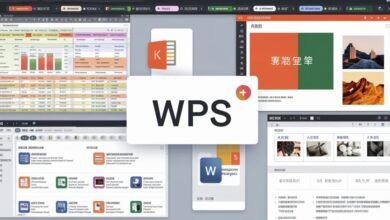MIAB-211 and Its Role in Enhancing Efficiency Across Industries

Introduction
MIAB-211 known as Minimum Inventory at Base Level 211 is a pivotal metric in supply chain management offering a comprehensive approach to inventory optimization. By maintaining the lowest acceptable inventory levels at specific base locations MIAB-211 ensures operational continuity and enhances efficiency across industries. This article will explore the importance of this framework, its applications in various sectors, and the ways it helps organizations streamline operations and reduce costs.
The Meaning and Purpose of MIAB-211
Thus, overall MIAB-211 identifies the minimum amount of inventory that needs to be stocked at a certain base, for instance, a warehouse or a distribution center, to support its functioning. They play a role of back up which helps companies to have enough stocks with them in case of changes in the demand, or any interuption of the supply chain.
The primary goals of MIAB-211 include
- Preventing Stockouts: Thus the fact that MIAB-211 maintains minimum levels ensures that companies do not exhaust their stock in order to meet the customer demand.
- Minimizing Holding Costs: The last disadvantage is associated with increased stay expenses in the case of an excess of inventory. As earlier discussed, MIAB-211 enables organisations to keep inventory levels high only in areas where demand high but taking precautions to avoid stocking large quantities of the inventory.
- Improving Customer Satisfaction: MIAB-211 helps the companies to provide the products on the right time and hence the customer satisfaction and loyalty.
- Optimizing Supply Chain Efficiency: Appropriate inventory levels help minimize supply chain problems thus giving a boost to operations and utilization of resources.
Evolution of MIAB-211
The concept of maintaining minimum inventory levels has been a cornerstone of inventory management for decades. Early models relied on simple calculations based on historical data and lead times. However, as global supply chains grew more complex, more sophisticated methods were needed. MIAB-211 has evolved to include advanced statistical techniques and data analytics, allowing for more accurate and efficient inventory management.
Modern inventory management systems utilize real-time data, predictive analytics, and machine learning to optimize inventory levels dynamically. This shift has enabled companies to better manage their supply chains in an ever-changing market environment.
Key Features of MIAB-211
Several key features make MIAB-211 an essential tool in enhancing efficiency:
- Data-Driven Decision Making: This system specifically applies historical and real-time data to identify inventory levels for the business. Hence, through demand patterns, lead time, and safety stock, managers and supervisors can make appropriate inventory management decisions.
- Dynamic Adjustments: What the new system has unfortunately failed to include is that the minimum inventory level is not fixed. It can also be adjusted based on the market situation, seasonal variations, or the performance of suppliers.
- Risk Mitigation: This system assists in managing the risks related to supply chain interruptions so that the entity has sufficient stock to act proactively in case of increased demand or shortages in supply.
- Cost Optimization: Due to the high cost of holding inventory especially in the current world where products can become obsolete, companies should ensure that they keep inventories at the barest possible minimum.
Applications of MIAB-211 Across Industries
MIAB-211 is widely used across various sectors, each benefiting from its ability to streamline operations and improve efficiency. Below are some examples of how different industries implement this system to optimize their processes.
- Manufacturing
To operate efficiently without interruptions from stockouts, a production line relies on MIAB-211’s vital role within the manufacturing business. Some of the benefits of having low inventory levels for raw materials and components include reduction in manufacturing time, efficient provision of storage space. For example, automobile producers use MIAB-211 to control just-in-time production. They also manage parts systems without needing to make large stocks of them.
- Healthcare
Most healthcare organizations use MIAB-211 to control medical stocks, such as medical supplies, pharmaceuticals, and various equipment. Health care delivery systems must maintain the right stock of inventories. This ensures they do not compromise the number of patients treated in hospitals. By using this approach, hospitals can stock supplies like medicines, syringes, and gloves adequately, ensuring they don’t run out. At the same time, they avoid overstocking when demand is low, preventing the need to find costly storage solutions.
- Retail
Retailers apply MIAB-211 to main supply chain management and guarantee products are on the market always. Companies can study customers’ needs and sales movements to set appropriate minimum safety stocks. This approach helps them avoid establishing excessively high stocks. For instance, fashion stores can adapt to variations in demand and distribution. They achieve this by adjusting the identified strategy based on market trends and performance records from previous months and seasons.
- Energy
MIAB-211 enhances the efficiency of stockpiling various resources, such as fuel, equipment, and spare parts, in the energy sector. In utilities, companies can avert stock-outs of key infrastructure commodities, reducing disruptions and costly downtimes. By leveraging this system, energy companies can optimize resource management. This focus includes suppliers and risk factors that may arise from disruptions in the supply chain.
Technical Aspects of MIAB-211
The success of MIAB-211 implementation depends on its technical infrastructure. Experts utilize several advanced technologies and methodologies to ensure its effectiveness.
- Machine Learning Algorithms: These algorithms help predict future demand based on historical data, allowing the system to dynamically adjust inventory levels as needed.
- Data Analytics Tools: By leveraging big data analytics, inventory management systems can process large volumes of information to identify trends and optimize inventory levels.
- Cloud Computing: Cloud platforms enable real-time data sharing and collaboration, allowing all stakeholders in the supply chain to access updated inventory information.
- Visualization Tools: Visualization platforms like Tableau and Power BI help businesses monitor system performance and make informed decisions based on clear, data-driven insights.
Challenges of Implementing MIAB-211
While MIAB-211 offers numerous advantages, its implementation is not without challenges. Companies must invest in proper infrastructure, including advanced software systems. They also need to ensure they have trained personnel to make the most of this inventory management framework. Additionally, integration with existing systems can be complex. There may also be initial costs related to data management and software implementation.
Another significant challenge is the data security and privacy concerns associated with using MIAB-211. Businesses must protect sensitive information, especially when working with cloud-based systems.
Conclusion
Researchers have found MIAB-211 useful in improving productivity within organizations in healthcare, retail, and other industries. Implementing minimum inventory levels helps organizations achieve smooth operations with their supply chains. It also cuts costs in the process. Despite the challenges of implementation, its advantages clearly surpass these issues. Therefore, it is fundamental in today’s inventory management.




